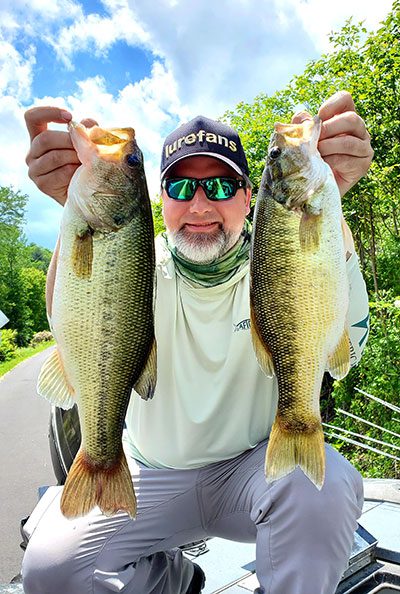As the spawn is wrapping up in the Northern Hemisphere and higher elevations of the mountains, bass will hit that post spawn funk and people start to wonder where they went. The spawn is very hard on bass, and they go through a period of rest right afterwards. There are signs to look for when figuring out what part of the funk they are in.
The first sign you will see is when you go to the lake, you will notice all your catches are small males. Why this happens is that those males guard the fry, after the eggs hatch, from predatory losses. The females and males both are really not looking to feed during this time. In fact, they focus on different tasks. Do not forget they have not fed since they went on beds. They only bite to protect the nest and/or the fry. After the females lay their eggs, their job is done so they focus on recovering to heal from what they just went through, while the males focus on keeping the predators away from the fry, so their job is not done yet. This explains why you experience a lot small bass catches all of a the sudden.
Not all hope is lost when you want to catch something of quality. During the funky stage, you want to break out your plastics and figure out if you can catch some of those early spawners. You will have a wave of bass that are already looking to start feeding up after they recover, you just need to find them. How this is done is you just check the secondary points going to the main lake point to find hungry bass. Once you find them, they will be in schools. You want to find a lure that you can fire the school up with. I like to use something with a single hook so you can get them off and get that lure back in as fast as you can. Once a schooling situation starts to happen bass have to compete to feed. This is also a situation where the fisherman wins.
Now it’s time to figure out the easiest way to find these schooling bass. I believe it is more efficient to start at the main lake point until you meet up with the first wave. If you start from the bedding areas, you might get distracted with bites coming from the second and third waves, which are not as aggressive as the first wave. Plastics are important right now because you will find lots of bass in the shallows, in the junk, and you need something weedless. Some bass go deep and, usually these are the bigger variety that feed on shad and trout. Bass in the shallow areas will feed on bluegill, frogs, worms, and crayfish.
Let us talk about the shad spawn. Bass from shallow and the deep will catch on to the shad spawn, which happens early in the morning, and overcast days in low light situations. It usually happens for a few hours then dies out. On rainy days, it could last even longer. This is a special situation because they focus on this bite not so much the fisherman. Knowing what to look for this time of year can bring a lot of fun and good times with friends and family.
Scott Norton is a Western North Carolina native. Born in Asheville, N.C., he is a long-time hunter, angler and weekend warrior.
